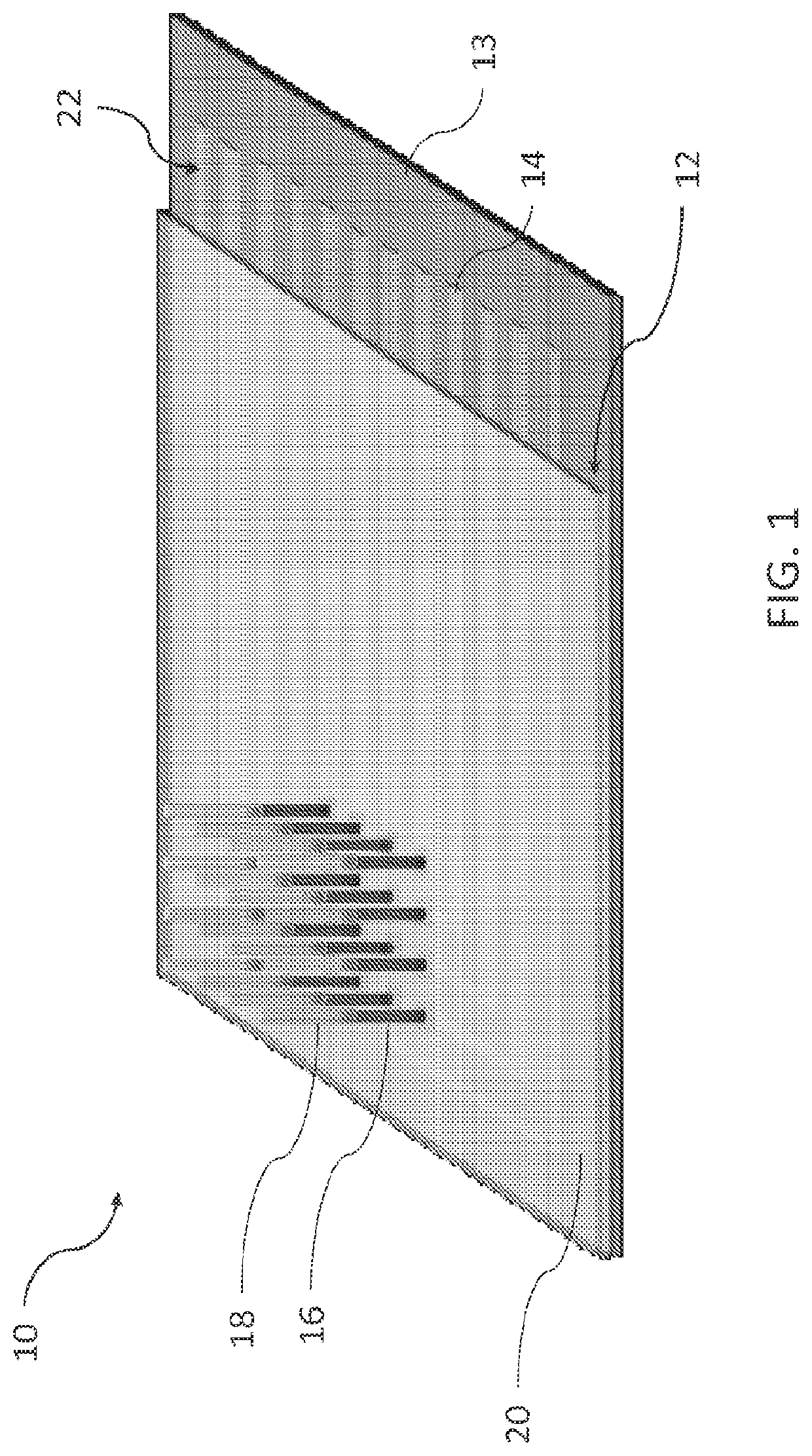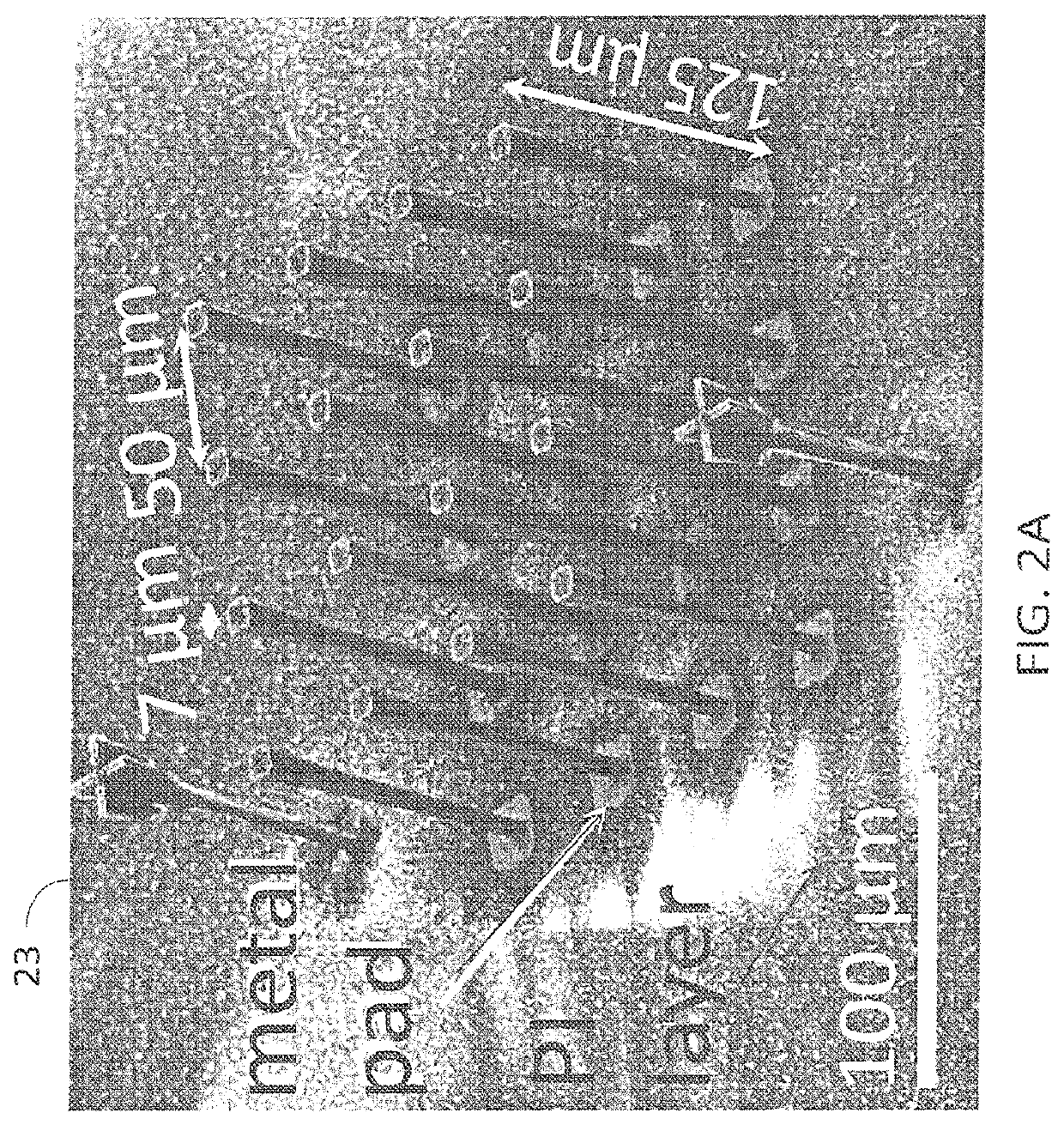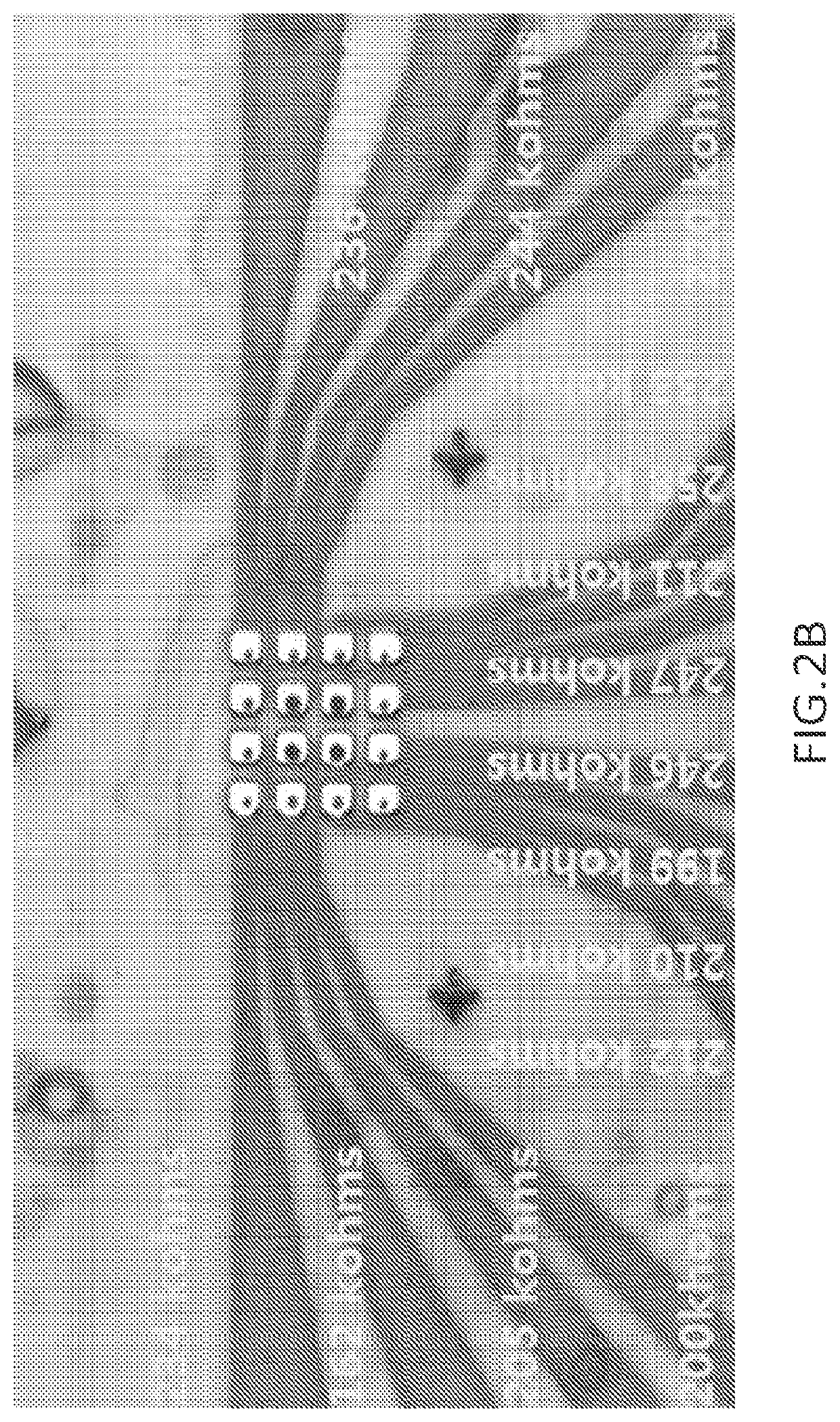Method for forming a multielectrode conformal penetrating array
a conformal penetrating array and multi-electrode technology, applied in the field of sensors, can solve the problems of inability to discriminate the firing pattern of individual neurons from eeg data, poor spatial resolution of electrodes, and limited ability to determine neural activity
- Summary
- Abstract
- Description
- Claims
- Application Information
AI Technical Summary
Benefits of technology
Problems solved by technology
Method used
Image
Examples
Embodiment Construction
[0023]An embodiment of the invention is a penetrating multi-electrode array on a thin film conformable substrate. The array can conform to cortical tissue, but provides stiff penetrating electrodes that can penetrate cortical tissues. Preferred embodiments provide a 3D electrode design with penetrating silicon micro electrodes. Preferred embodiments provide for separate addressability of penetrating electrodes through individual electrode lines of the thin film conformal substrate.
[0024]A preferred embodiment is a conformal penetrating multi electrode array that includes a flexible substrate, electrode lines encapsulated at least partially within the flexible substrate, and a plurality of penetrating semiconductor micro electrodes extending away from a surface of the flexible substrate and being electrically connected to provide signals to the electrode lines.
[0025]End portions of at least some of the electrode lines are preferably exposed for contact to another device. An electrode...
PUM
| Property | Measurement | Unit |
|---|---|---|
| thickness | aaaaa | aaaaa |
| height | aaaaa | aaaaa |
| height | aaaaa | aaaaa |
Abstract
Description
Claims
Application Information
 Login to View More
Login to View More - R&D
- Intellectual Property
- Life Sciences
- Materials
- Tech Scout
- Unparalleled Data Quality
- Higher Quality Content
- 60% Fewer Hallucinations
Browse by: Latest US Patents, China's latest patents, Technical Efficacy Thesaurus, Application Domain, Technology Topic, Popular Technical Reports.
© 2025 PatSnap. All rights reserved.Legal|Privacy policy|Modern Slavery Act Transparency Statement|Sitemap|About US| Contact US: help@patsnap.com



